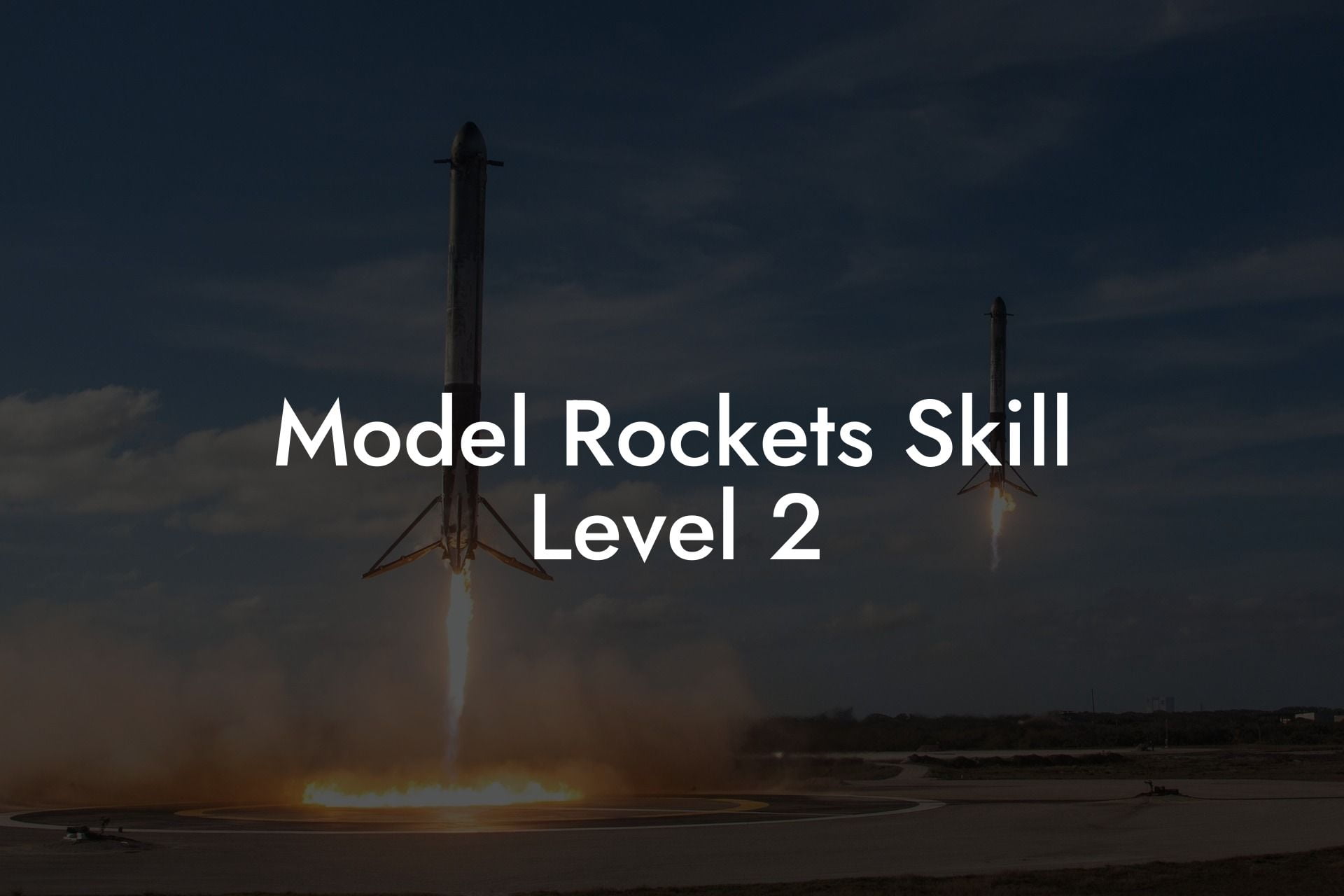Are you ready to take your model rocketry hobby to the next level? Welcome to Model Rockets Skill Level 2! In this guide, we will be diving into the exciting world of intermediate model rocketry, exploring the intricacies of this fascinating hobby. Whether you're a seasoned rocket enthusiast or a newcomer eager to expand your knowledge, this article from Austin Rockets is the perfect resource for you. So buckle up and get ready to blast off into the exhilarating realm of Level 2 model rockets!
Model Rockets Skill Level 2 Table of Contents
What is a Level 2 Model Rocket?
A Level 2 model rocket, as classified by the National Association of Rocketry (NAR), involves the construction and launch of more advanced rockets than beginner Level 1 rockets. These rockets typically require more complex building techniques, higher-quality materials, and a greater understanding of flight dynamics and rocketry principles. They may also utilize more advanced propulsion systems. The primary goal of Level 2 rocketry is to expand on the skills and concepts learned in Level 1 and provide rocket enthusiasts with new challenges.
Key Skills and Techniques for Level 2 Model Rockets
Skill 1: Advanced Build Techniques
- Internal and external fillets: These are used to strengthen the bond between parts, such as the motor mount, and the body tube. Fillets can be made from epoxy or wood glue.
- Advanced fin designs: Level 2 rockets often have more unconventional and aerodynamic fin structures, which may require advanced cutting and shaping techniques.
- Reinforcing materials: Using materials like fiberglass or carbon fiber to strengthen the body and fins is a common practice in Level 2 model rocketry.
Skill 2: Advanced Propulsion Systems
- Multi-staged rockets: Level 2 rockets can incorporate multiple stages, where one or more engines fire in sequence to propel the rocket to higher altitudes and speeds.
- Clustered motors: This involves using multiple smaller engines at once to achieve more thrust. This requires careful planning to balance thrust and weight distribution correctly.
- Reloadable motor systems: Many Level 2 rockets use reusable motor casings with replaceable propellant cartridges, allowing for greater customizability and cost-efficiency.
Skill 3: Flight Dynamics and Simulation
- Understanding center of pressure and center of gravity: The balance of these forces is crucial in achieving stable flight and preventing a rocket from spiraling out of control.
- Utilizing simulation software: Programs like RockSim and OpenRocket are indispensable in predicting the flight trajectory of a rocket and helping to optimize its performance.
- Recovery system upgrades: Level 2 rockets require more advanced and reliable recovery systems, such as dual-deployment methods, which use multiple parachutes to improve descent control.
Model Rockets Skill Level 2 Example:
The Executioner Model Rocket from Estes
The Executioner is a perfect example of a Level 2 model rocket. Featuring a unique, eye-catching design with large, swept-back fins, it provides a challenging and rewarding build experience. Its cardboard body and plywood fins can be reinforced with fiberglass, and it uses a dual parachute recovery system for safer landings.
The Executioner also employs a D-class motor, providing ample thrust and enabling it to reach impressive altitudes of over 600 feet. Builders can utilize RockSim software to optimize and predict the Executioner's flight capabilities accurately. Overall, a fantastic project for aspiring Level 2 rocketeers!
We hope you've enjoyed this in-depth look at Level 2 model rocketry! As you can see, this realm is filled with exciting challenges and opportunities for growth in your rocketry skills. Remember, the sky's the limit when it comes to model rocketry, so keep pushing your boundaries and exploring new heights. And when you're ready to take on even more advanced projects, Austin Rockets has you covered with guides on higher-level model rocketry as well. Be sure to share this article with fellow rocket enthusiasts, and let's continue to fuel our passion for this incredible hobby!













